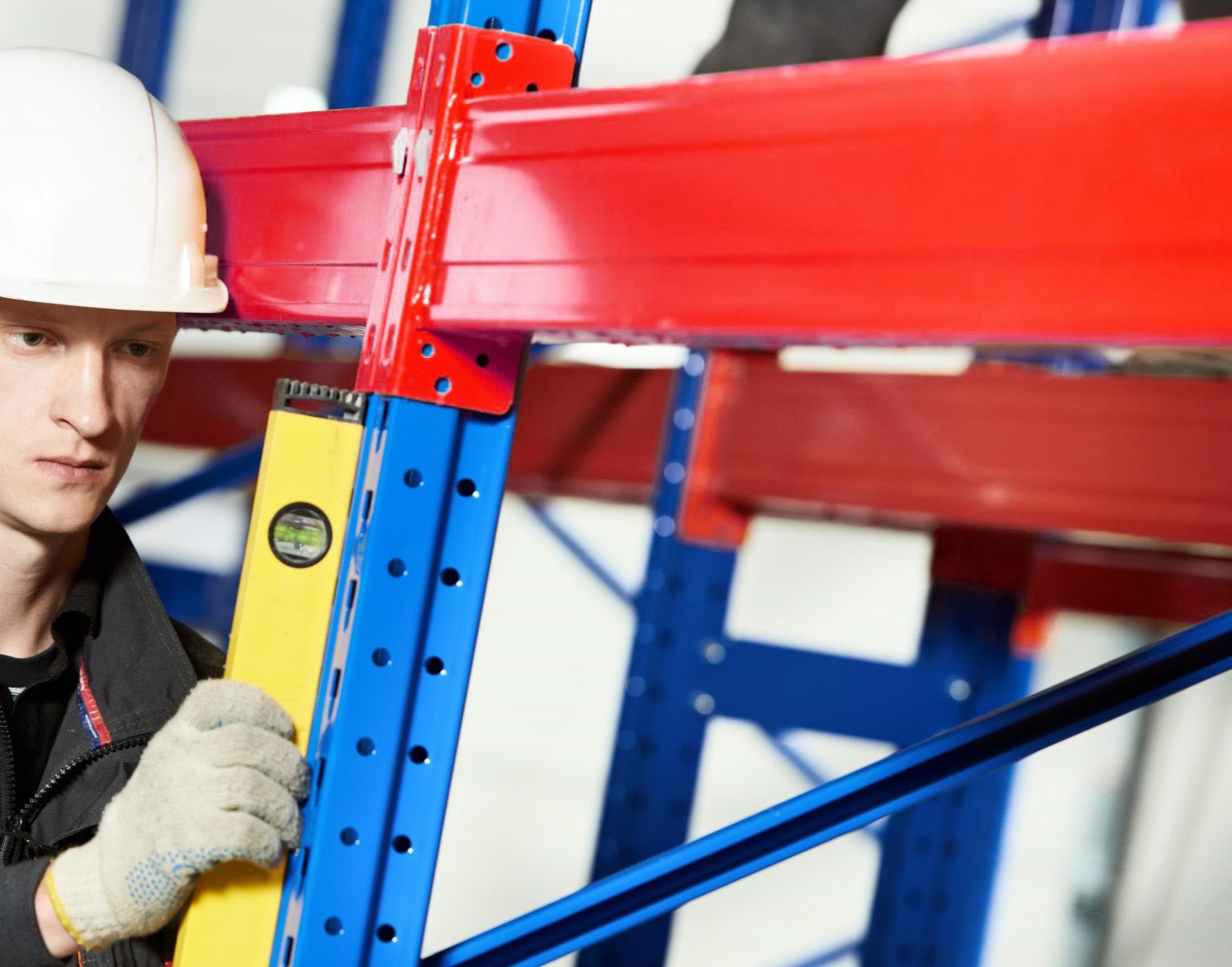Pallet racking plays a crucial role in warehouses, enabling your business to store more items in an organised way. However, this system is subjected to frequent loading and unloading by mechanical handling equipment.
Without proper racking installation or maintenance, its structures and inventory can collapse, damage property and injure workers.
That’s why performing regular audits is essential to ensuring a safe working environment for you and your workers. In fact, it’s a mandatory practice under the Australian Standards AS-4084 for Steel Pallet Racking.
A pallet racking inspection allows you to flag potential concerns ahead of time, preventing them from escalating into major issues.
Below, we break down the purpose and process of pallet racking inspections. Read on to understand why, when and how to perform this important audit.
What is a pallet racking inspection?
![]()
A pallet racking inspection involves an in-depth assessment of your pallet racking’s condition to pinpoint any damages that could pose safety hazards.
A licensed inspector will examine the racking system for any harm or modifications that might cause accidents. This inspection checks for adherence to safe working loads, unauthorised changes to installation and the proper use of equipment.
After the pallet racking audit, the inspector will prepare a comprehensive report that details any damages or compliance issues according to the AS4084-2023 Australian Standard.
While the Australian Standard AS4084 is specific to ‘pallet racking’ and does not cover drive-in racking, cantilever racking, mobile racking, or non-steel racking, we strongly recommend applying these inspection standards across all racking types.
Performing a warehouse racking inspection is vital not only in preventing inventory loss and financial damages but also injuries and fatalities. Don’t risk your workers’ safety, stock or brand reputation.
Why does pallet racking need to be inspected?
![]()
As well as adhering to the Australian Standards for Steel Racking, a pallet racking inspection is crucial for maintaining safety within your warehouse.
Given that pallet racking is engineered to support substantial weight, neglected or compromised racking systems can lead to collapse.
Such failures can lead to severe, potentially fatal accidents, along with the loss of goods, business disruptions, and the possibility of legal action.
What does a typical pallet racking inspection involve?
A pallet racking inspector will perform a comprehensive visual audit of your racking, examining every part for durability, usability, compliance, and general condition. They will also check that the structure has not been modified and that the manufacturer’s load capacities are being respected.
Generally speaking, a pallet racking inspection checklist should include:
- Reviewing the application and use of the racking;
- Examining racking condition and plumb;
- Checking compliance with working load limits;
- Comparing the current configuration to the original configuration drawings;
- Inspecting uprights for damage and distortion;
- Analysing beams for damage, distortion and weld condition;
- Appraising braces for damage;
- Assessing floor fixings for damage, corrosion and configuration;
- Evaluating pallet racking signage.
Based on their findings, an auditor will also provide suggestions on the necessary repairs, replacements, or tasks required to ensure your pallet racking meets all relevant Australian Standards.
How often should warehouse racking be inspected?
![]()
According to the AS4084-2023 Australian Standard and Rack Safety Inspection Code of Practice, warehouse racking must be inspected at least every 12 months.
If your business neglects this basic requirement, its insurance policies, such as Workers’ Compensation, Professional Indemnity, and Public Liability, may be cancelled. Moreover, non-compliance with Work Health and Safety regulations can bring substantial fines and even imprisonment.
While annual inspections are standard, we recommend more frequent checks. By performing monthly or even weekly assessments, your team can spot and track any damage that might occur between yearly audits. After all, structural damage tends to build over time.
Who can perform a pallet racking inspection?
Having your warehouse racking inspected by the right person is just as important as performing audits on a regular basis.
You need to hire a certified company that specialises in pallet racking inspections and has deep knowledge of the Australian Standards for Steel Racking. That way, you can be confident that your racking meets all criteria to support a safe working environment.
Purchase and inspect pallet racking in Sydney
Optimise your storage from the start with Pallet Racking Sydney. Our convenient pallet racking systems streamline storage processes in warehouses and distribution centres. We can design, manufacture and install customised selective racking that amplifies your capacity and improves functionality.
Time for a pallet racking inspection? We partner with independent auditors at Proactive Compliance to ensure your racking system remains safe and structurally sound.
Proactive Compliance is a full-service WHS Consultancy company that takes a holistic approach to storage racking maintenance. They will help you to create an audit schedule and reporting system that will provide evidence of maintenance to regulatory authorities.
Learn more or Contact Pallet Racking Sydney to discuss your specific needs. We’ll equip you with a selective pallet racking system that takes productivity to new heights.
